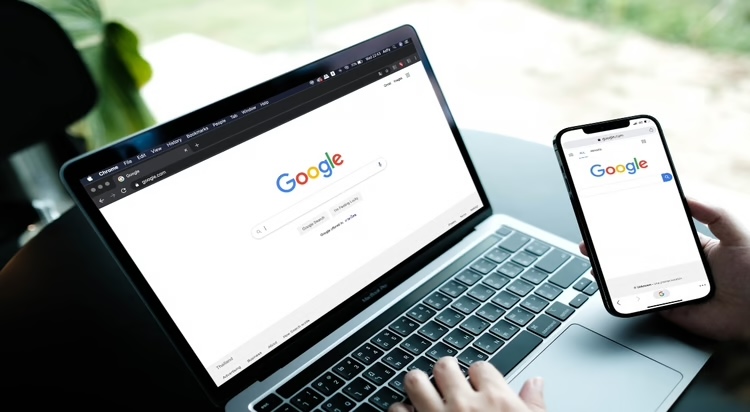
Google announced three new methods, useful for both researchers and consumers, to analyze images online and help to track sources, descriptions, and edit history.
Is that an original product in an online shop? Is that photo genuine? You can search the image with Google Search to reveal its source. This can also provide some price comparisons or AI-generated descriptions.
Now, Google Search has added three new ways to make sense of what you see online.
The first feature, “About this image,” just became available to English language users globally through Google Search. To access it, mobile phone users, searching with an image or screenshot in Google Lens, need to click on the three dots on an image in Google Images results.
“With this background information on an image, you can get a better understanding of whether an image is reliable – or if you need to take a second look. For example, with About this Image, you’d be able to see that news articles pointed out that this image depicting a staged moon landing was AI-generated,” Google’s blog post reads.
This tool allows the discovery of the following:
- Image history: This reveals when Google Search may have first discovered an image or similar images and whether it was previously published much earlier on other webpages.
“This can be helpful if an image is being taken out of context and shared in relation to a current event, but it’s actually much older,” Google says.
- How other sites use and describe the image: Google will reveal how an imageis used on other pages and if fact-checking sites have anything to say about it.
“This information can be helpful to assess the claims being made about an image and to see evidence and perspectives from other sources,” the blog post reads.
- Image metadata: This will reveal details that image creators or publishers added, including if Google’s or other AI generated the image.
Chrome on desktop and mobile will add this new feature later this year. It will work by right-clicking or long-pressing on an image.
“You can access this tool by clicking on the three dots on an image in Google Images results or by clicking “more about this page” in the About this result tool on search results. We’ll add more ways to access it in the coming months,” Google promises.
Already, Chrome users can search images with Google Lens and use a feature called “Find image source,” revealing a lot of helpful information about where the picture originates. This is useful for fact-checkers and researchers to verify authenticity and detect plagiarism, for buyers looking for deals or checking for counterfeits, for legal and copyright issues, for open source intelligence (OSINT), etc.
To access it, just right-click on the image, choose “Search image with Google,” then select “Find Image source” in the search results.
Google also integrated an image search in its Fact Check Explorer, a tool for journalists and fact-checkers.
The tech giant is also starting to experiment with AI-powered descriptions of some sources.
“Say you stumble upon some cool new hiking boots, but they’re from a small merchant you’re not familiar with. You might want to do research on the seller – but in some cases, it can be hard to find information about lesser-known sites,” Google provides one use case.
AI-written descriptions of the source will show up in the “more about this page” section.





